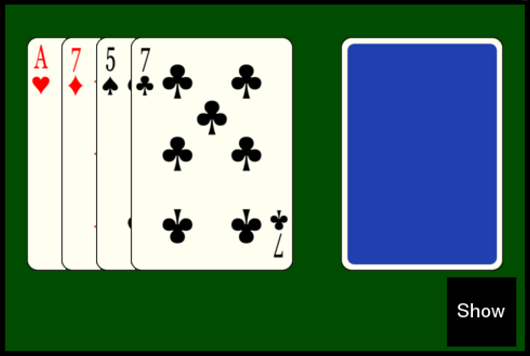 In the previous post, I talked about artificial life and used it to demonstrate the amazing complexity that can develop from the simplest rules.
In the previous post, I talked about artificial life and used it to demonstrate the amazing complexity that can develop from the simplest rules.
That kind of complexity developing from simplicity is a concept so counter-intuitive that it wasn't been part of humanity's collective mental toolbox for most of recorded history. Since it's very difficult to conceive of this, even with a feedback component involved, the only two alternative explanations left for the average person are pure chance, and the existence of deities.
If you consider the chance argument, you have to look around at the complexity of the world around you and consider that the odds of this developing by pure chance are very, very low, about 1 in a “squintillion” (a word coined by Harry Lorayne to describe any number that is so long, you have to squint to see the last numbers).
Now, consider the argument for the existence of a deity or deities. In Douglas Adams' speech, Is there an Artificial God? (originally given, interestingly, at an artificial life conference), gives a wonderful explanation in the following video of how this argument must have first developed:
Certainly, the concepts of iteration, feedback, and change were understood on a basic level, but when it came to explaining the world around us, it didn't seem possible as an explanation.
So, with a deity-created explanation, especially considering how much more satisfying it is than dumb luck, how did we go from that to start understanding the power of iteration, feedback, and change?
As so often happens in history, it began with attempts to fit the world around us into the explanation we had, and examining the problems encountered by trying to do that. In the following episode of James Burke's The Day The Universe Changed, called Fit To Rule, James Burke begins just as all that is about to fall apart. Our starting point is this wonderful introduction:
OK, Let's get the story off to a cracking start. Here's Linnaeus, the fellow who'd been up north. A really dull botanist, wandering around the really dull world they'd all made for themselves.
Not a hair out of place, so to speak: symmetrical, balanced, like their architecture. This is the type of stuff you go for if you're sure, as they were, that the world was created at 9 A.M. on October 26, 4004 B.C., and was never going to change: cool, geometrical.
They put nature in a pot in a garden because that's the way the world was for people like Linnaeus: regimented.
Where do we go from there? Watch and learn:
The Day The Universe Changed 08-10 Fit to Rule... by costello74
As you can see, the effects of studying real life changed more than just our views on iteration, feedback, and change. Quite naturally, it ran up against the previous view of the world that people had held onto for thousands of years.
Now, the three versions that affected 20th century life so much had two main things in common. First, the Haeckel, Sumner, and Marx views were all based on the struggles of the pasts of their respective countries, as well as on hopes and designs for the future.
Of course there are differences. Haeckel and Marx were trying to apply natural laws to a society in order to pave the way to a superior society. Sumner's version didn't try and design the outcome as it did to try and allow the struggles of society itself to determine the end.
The second thing that all three versions had in common was that they all focused on the struggle. If evolution was complete and right, then everyone should be always be struggling for everything. But if everything is struggle, then things like trade, property, and even the tiniest villages should never have existed, as they all require some form of cooperation.
The human body of knowledge, of course, is never complete, which was part of the problem here. Strangely enough, it was the Cold War itself that would bring the next piece of the puzzle into focus, and help us understand cooperation vs. struggle in a larger sense.
How did it do that? That's the subject of the next post in this series.


 I'm going to take this blog in a rather unusual direction for the next few posts. I think you'll enjoy it.
I'm going to take this blog in a rather unusual direction for the next few posts. I think you'll enjoy it. Back in March,
Back in March,  Admittedly, learning the
Admittedly, learning the  It's one thing to be able to do math well, whether on paper or in your head. It's often quite another thing to be able to keep the problem in context as you work through it.
It's one thing to be able to do math well, whether on paper or in your head. It's often quite another thing to be able to keep the problem in context as you work through it.



